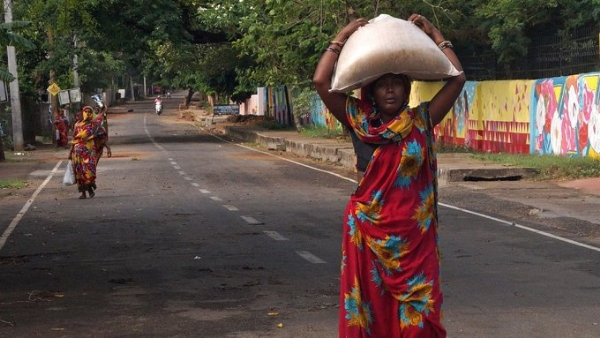Number of states with over 10% Multidimensional poverty halved in 5 years: NITI Ayog
18 Jul 2023 14:05:33
New Delhi, Jul 18: The number of states with less than 10 percent of people living in multidimensional poverty doubled in the five years between 2016 and 2021, shows the latest report on poverty from government think tank NITI Ayog, released Monday. Titled ‘National Multidimensional Poverty Index: A Progress of Review 2023’, the report examines three broad indicators of multidimensional poverty — health, education, and standard of living, each comprising various sub-indicators.

Rather than employing a standard income-based approach, it uses statistics from the National Family Health Survey (NFHS) to capture the various dimensions of poverty in India.
13.5 crore people escape multidimensional poverty in India as per National #MPI review 2023.
— G Pradeep (@pradeep_gee) July 18, 2023
Uttar Pradesh takes lead in terms of poverty reduction with 34.27 million people exiting poverty. pic.twitter.com/dnJkKIzIsx
According to the report, in 2015-16 (NFHS-4), only seven states had less than 10 percent of their population living in multidimensional poverty — Mizoram, Himachal Pradesh, Punjab, Sikkim, Tamil Nadu, Goa, and Kerala. However, in 2019-21 (NFHS-5), the list had doubled to include 14 states, with the seven new additions being Telangana, Andhra Pradesh, Haryana, Karnataka, Maharashtra, Manipur, and Uttarakhand. All of these states saw a significant reduction in poverty headcount ratios. The percentage of people living under multidimensional poverty decreased from 13.18 percent to 5.88 percent in Telangana; from 11.77 percent to 6.06 percent in Andhra Pradesh; from 11.88 percent to 7.07 percent in Haryana; from 12.77 percent to 7.8 percent in Karnataka; from 14.8 percent to 7.81 percent in Maharashtra, from 16.96 to 8.1 percent in Manipur; and from 17.67 percent to 9.67 percent in Uttarakhand. Collectively, India has lifted approximately 13.5 crore people out of multidimensional poverty in the same period, the report said. In 2015-16, one in four Indians (24.85 percent) met the criteria for multidimensional poverty. By 2019-21, this percentage decreased to 14.96 percent or one in seven. Notably, except for Bihar, no other state in India has more than one-third of its population living in multidimensional poverty. Even here, the improvement has been remarkable. In 2015-16, over 51.89 percent of Bihar’s population lived in multidimensional poverty. By 2019-21, the figure had dropped to 33.76 percent. In other words, while one out of every two persons in Bihar was living in multidimensional poverty in 2015-16, that number has now improved to one in three.
Also Read: Wholesale inflation in India falls to -4.12%
Similarly, Jharkhand reduced the percentage of people living under multidimensional poverty from 42 percent in 2015-16 to 28.82 percent in 2019-21, Uttar Pradesh saw a decline from 37.68 percent to 22.93 percent, and in Madhya Pradesh, multidimensional poverty dropped from 36.57 percent to 20.63 percent. However, a further examination of the data suggests that poverty reduction is not equally represented in the three main indicators of standard of living, health, and education. The answer to how India achieved such rapid poverty reduction lies in the data about the seven standard-of-living sub-indicators— cooking fuel, sanitation, drinking water, housing, electricity, assets, and bank accounts— rather than in the indicators for health and education. For instance, the NITI Aayog report shows that around 58 percent of Indians were deprived of clean cooking fuel in 2015-16, but by 2019-2021, it was only 44 percent. Similarly, the percentage of individuals lacking adequate sanitation facilities dropped from 51.88 percent to 30.13 percent, electricity deprivation went from 12 percent to 3.27 percent, and the percentage of people lacking access to banking reduced from 9.66 percent to 3.69 percent.